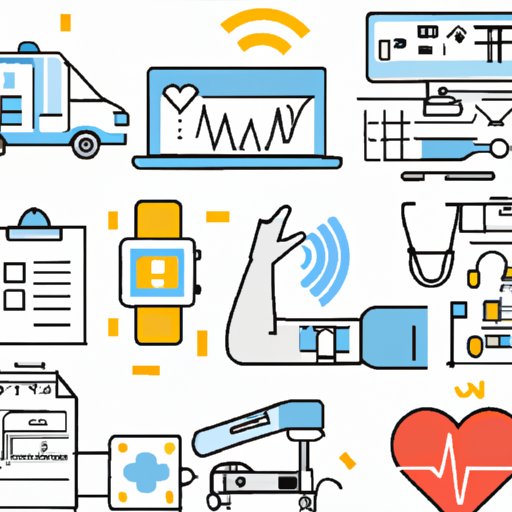Introduction
Technology has revolutionized many aspects of modern life, and health care is no exception. From automating manual processes to improving access to quality care, technology has improved health care in ways that have made it more efficient and affordable. In this article, we will explore how technology has improved health care in terms of patient outcomes, accuracy and efficiency, and cost reduction.

Improved Patient Outcomes: How Technology has Improved Health Care
The most significant benefit of technology in health care is improved patient outcomes. Automation and robotics are two key technologies that have been used to improve patient outcomes. Automation involves using computers and other machines to perform tasks that would otherwise be done manually. Robotics, on the other hand, refers to the use of robots to assist in medical procedures. By automating and roboticizing certain medical tasks, doctors can reduce errors and increase the speed and accuracy of medical procedures.
In addition to automation and robotics, technology has also improved access to quality care. For example, telemedicine services allow patients to consult with their doctors remotely, eliminating the need for them to travel long distances or wait in line at a clinic.
Finally, technology has also improved diagnostics. Advanced imaging technologies such as Magnetic Resonance Imaging (MRI) and Computed Tomography (CT) scans make it easier for doctors to detect and diagnose illnesses quickly and accurately. This reduces the chance of misdiagnosis and ensures that patients receive the best possible treatment.

Enhancing Accuracy and Efficiency: How Technology is Revolutionizing Health Care
Another way technology has improved health care is by increasing accuracy and efficiency. Data analysis is one example of how technology can be used to improve accuracy and efficiency. By analyzing large amounts of data, doctors can identify trends and patterns that may not be apparent to the naked eye. This allows them to make more informed decisions and better predict outcomes.
Technology has also enabled automated processes that reduce the amount of time needed for certain tasks. For example, electronic medical records (EMRs) allow doctors to store and share patient information quickly and securely. This eliminates the need for paper-based records and makes it easier for doctors to review a patient’s medical history.
Finally, technology has improved communication between doctors and patients. Video conferencing and telemedicine services allow doctors to communicate with their patients remotely, eliminating the need for in-person visits. This increases efficiency and allows doctors to provide better care to more patients.
Reducing Costs: How Technology is Making Health Care More Affordable
Finally, technology has also helped to make health care more affordable. Electronic medical records (EMRs) have greatly reduced the cost of maintaining patient records. By eliminating the need for paper-based records, EMRs have saved hospitals and clinics millions of dollars. Additionally, telemedicine services allow patients to consult with their doctors remotely, which reduces the cost of in-person visits.
Wearable technology has also made health care more affordable. Wearable devices such as fitness trackers and smart watches allow patients to monitor their health and activity levels without having to visit a doctor. This reduces the need for costly tests and consultations and allows patients to take control of their own health.
Conclusion
In conclusion, technology has revolutionized health care in many ways. From improving patient outcomes to reducing costs, technology has made health care more efficient and affordable. Automation and robotics have increased the speed and accuracy of medical procedures, while data analysis and automated processes have improved accuracy and efficiency. Finally, telemedicine and wearable technology have increased access to quality care and made health care more affordable. Ultimately, technology has made health care more accessible, efficient, and cost-effective for everyone.
By continuing to invest in technology, we can ensure that health care remains accessible, efficient, and cost-effective for years to come.
(Note: Is this article not meeting your expectations? Do you have knowledge or insights to share? Unlock new opportunities and expand your reach by joining our authors team. Click Registration to join us and share your expertise with our readers.)
